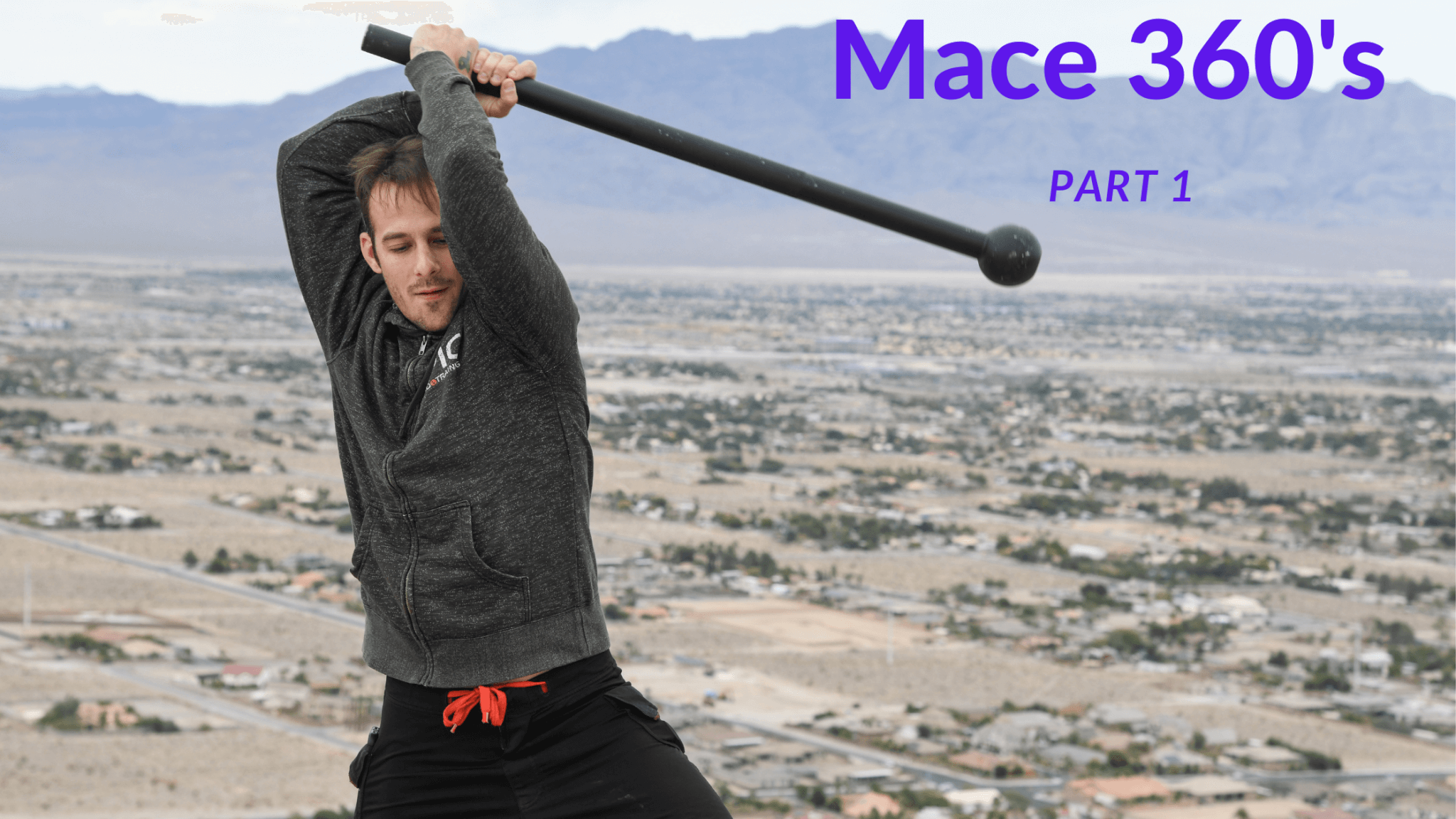The Steel Mace 360… If you only learn one move from steel mace training I believe the 360 swing would be the king to add to your arsenal, and here’s why.
First, let’s break down what the steel mace 360 swing is. In simple turns, it’s when you swing the mace in a full three hundred sixty degrees circle in the frontal plane starting in front of the body and swing behind you. Sounds confusing when typed out huh? Don’t worry I left a link down at the bottom that links directly to a Steel Mace 360 Swing Tutorial taught by yours truly.
So now we have an idea of what it is, what exactly is the point of it, and what is the 360 swing working. Let’s go over the muscles used in the 360 swing next. In this movement you are working the whole body, from your little toes to your big ol’ brain! Here’s a more descriptive approach:
Primary Muscles Worked:
- Hands: all the muscles in your hands due to your are holding on to this fly object.
- Forearms: Extensor & Brachioradialis Muscles, again your forearms engage to help you grip harder onto the mace.
- Deltoids(Anterior, Medial and Posterior): The shoulders are a primary mover of the 360 and they will be playing a major role being engaged throughout the entire swing.
- Latissimus Dorsi(Lats): Your lats engage towards the end of your swing as you pull the mace down from the backside to in front of you again. They are also engaged when holding the mace stable in your “Warrior Stance” or starting position
- Pectoralis(Chest) Muscles: This one like the lats engages on your elbow drive/ pull over from the back side.
- Internal/ External Obliques: These core muscles that sit on your sides deal with a lot of rotation and anti-rotation, due to the swing being a rotational exercise these babies should be engaged at all time during the movement.
- Rectus Abdominis( Six Pack): Keep a tight core to support your spine is ideal, but with the help of a little flexion from you RA will help with those heavier maces!
- Erector Spinae: The opposite of your Rectus Abdominis we have your Erector Spinae, another core and spine stabilizer.
- Rotator Cuff Muscles: Supraspinatus, infraspinatus, subscapularis and teres minor.
- Scapular Stabilizers: Serratus Anterior, trapezius and levator scapula.
- Triceps: This could be a primary and anyone who has done consecutive or even just heavy mace swing may agree, but being that it’s role is minimal I choose to keep it in the secondary muscles group. But with holding the mace in front and the swing behind you your triceps get some damn good activation.
- Biceps: Similar to your triceps, your biceps during your swing get a good pump, and will help controlling and holding onto the mace.
